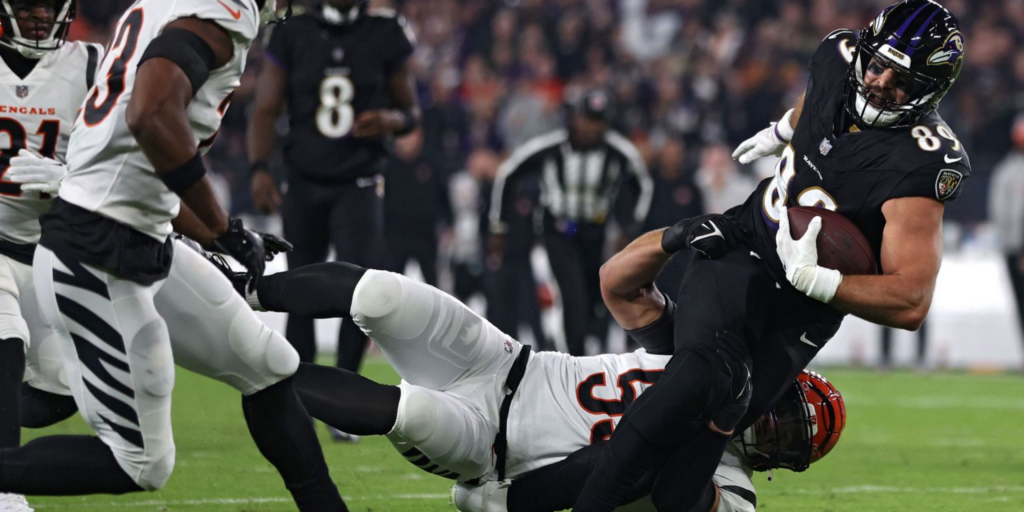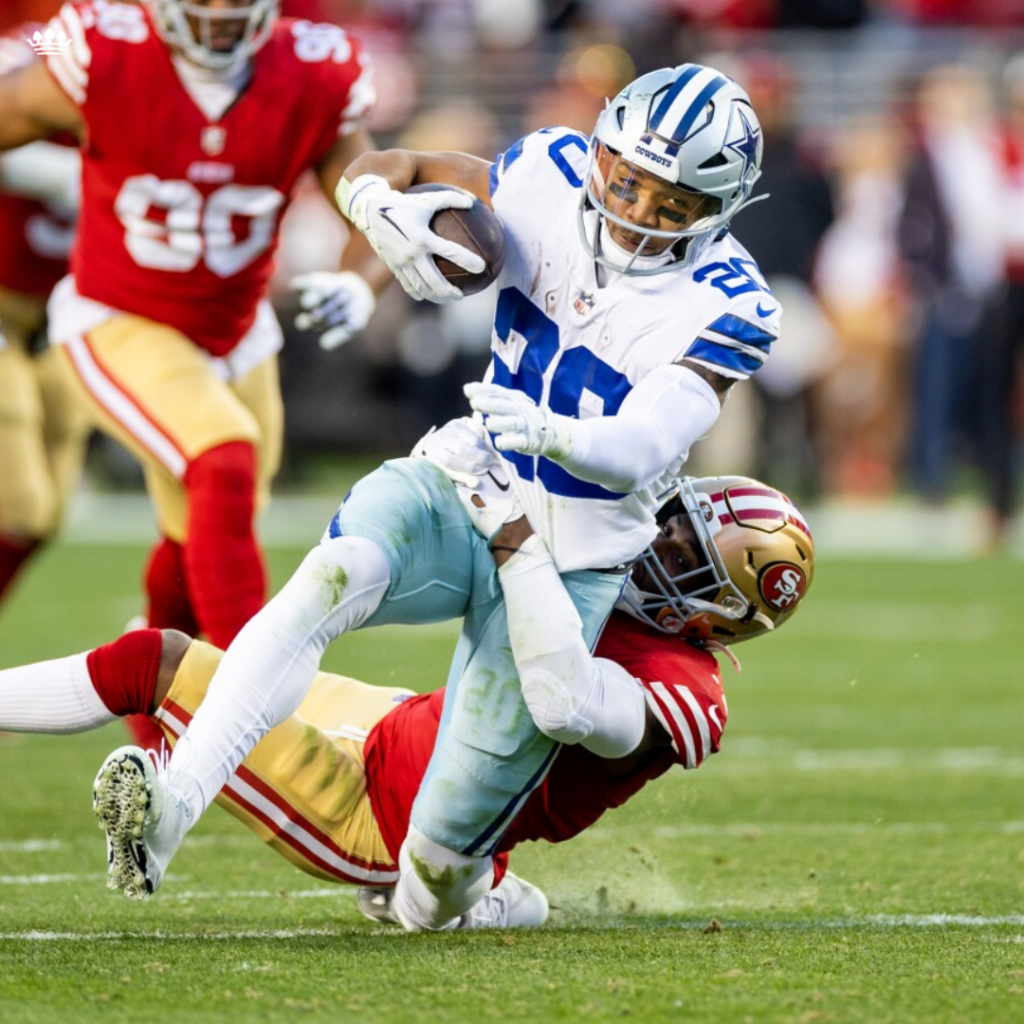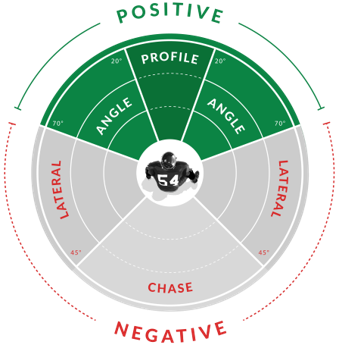
Scott Lawyer – Atavus Director of Analytics & Football Manager
As a former Collegiate linebacker and current Director of Analytics and Football at Atavus, I've seen my fair share of controversies in football. The recent debate surrounding the "swivel/hip-drop" tackle has sparked heated discussions among players, coaches, and fans. With the NFL's decision to ban this hip-drop tackle technique, we must approach the issue with a clear understanding of the tackle itself and the implications of this rule change.
Defining the Hip Drop Tackle
The NFL has defined the hip drop tackle as follows: "If the defender grabs the runner with both hands or wraps the runner with both arms: and unweights himself by swiveling or dropping his hips and/or lower body, landing on and trapping the runner's leg(s) at or below the knee." Keeping this definition objective and avoiding subjective interpretations is essential to ensure clarity for all stakeholders involved. The clear and concise definition will facilitate a more productive dialogue and ensure that the rule change is grounded in a shared understanding of the technique.
The Injury Concern and Players' Perspective

Over the past few seasons, we've witnessed unfortunate injuries resulting from what the league considers an unsafe or unnatural tackle technique. With prominent offensive players falling victim to these incidents, the NFL has taken action to enhance player safety. However, the rule change has raised concerns among the football community, particularly the players.
The NFL Players Association (NFLPA) had formally opposed the proposed rule, stating, "While the NFLPA remains committed to improvements to our game with health and safety in mind, we cannot support a rule change that confuses us as players, coaches, officials, and especially fans. We call on the NFL again to reconsider implanting this rule." This opposition highlighted the need for clarity and understanding when implementing new regulations and the importance of involving players in the decision-making process to ensure that any changes are practical and effective on the field.
As a former defensive player, I can certainly empathize with these concerns. Defensive players could potentially be put in a compromised position, but it will take a concerted effort to adapt and “survive” this new rule. The education process is a critical step that can't be overlooked.
Player’s Role and Addressing Technique

There is no doubt this rule directly impacts defensive players and their tackling mentality. In a brief study conducted by Atavus Analysts, we found a direct correlation between shoulder contact and the possibility of limiting the need for hip-drop tackles. In our analysis, it appeared that hip-drop tackles were primarily occurring in what we consider to be “negative situations”, where tacklers were tracking from a lateral or trailing position.
There is a big misconception around being able to limit YAC (yards after contact) in negative tackles, but our analyses proved to discount this train of thinking. According to our data, in negative situations, tacklers not only decreased their Average YAC from 2.1 to 1.4 yards when making primary shoulder contact but also increased their made tackle percentage by 15%. Shoulder contact in negative situations allows athletes to maximize their punch (power) and wrap (control) hence mitigating the need for hip-drop tackles. This will be a tall task for defenders, but we are confident an emphasis on technique will help players adapt.
Coaching Challenges and the Importance of Education
From a pure coaching perspective, we understand the difficulties of adapting to rule changes. With the hip drop tackle now banned, coaches must go back to the drawing board and search for alternative tackling techniques. This will require a significant investment in education and training to ensure players have the necessary skills to perform safe and effective tackles within the new guidelines. We acknowledge that this rule could be difficult for all participants to adapt to. Still, it will come down to equipping the athletes with the knowledge to tackle confidently without fearing penalizing their team.
At Atavus, we are committed to providing the resources and expertise needed to support coaches and players through this transition. By offering comprehensive tackling education programs and certifications, we aim to equip the football community with the knowledge and skills necessary to prioritize player safety while maintaining the integrity of the game.
The Fan Experience and the Role of Communication
As passionate fans of the game, we understand the importance of preserving football's excitement, integrity, and physicality. While the hip-drop tackle ban has sparked debates among fans, it's crucial to recognize that player safety should always be a top priority.
By addressing the hip-drop tackle issue, the NFL is attempting to demonstrate its commitment to player safety while educating fans about the importance of proper tackling techniques. Fans have a role to play in this process as well. Instead of viewing the rule change as a threat to the game’s essence, we should embrace it with an open mind and while the players to naturally adjust to the new regulations.
Lastly, by engaging fans in the discussion and providing clear explanations of the rule change, the NFL can foster a deeper understanding and appreciation of the game's complexities. This transparency will help maintain fan engagement and support throughout this process.
The Need for Data-Driven Insights
As the head of analytics at Atavus, I firmly believe that data-driven insights are essential when navigating complex issues such as the hip drop tackle. By analyzing the available data and working closely with the football community, we can develop a comprehensive understanding of the tackle technique and its potential impact on player safety. However, it's essential to acknowledge that the current sample size of data could be more significant, making it easier to draw definitive conclusions.
To address this challenge, we must continue to gather and analyze data from various sources, including game footage, injury reports, and player feedback. By combining this information with the expertise of coaches, players, and medical professionals, we can develop a more nuanced understanding of the hip drop tackle and its implications for player safety.
Looking Ahead
As we move forward, it's crucial that all stakeholders - players, coaches, officials, and fans - work together to adapt to the hip drop tackle ban and prioritize player safety without compromising the essence of the game. At Atavus, we will continue to provide the education and resources necessary to promote safe and effective tackling techniques, adapting to the rule change that has been implemented. This rule comes down to the behavioral changes regarding tackling; defensive players will need to rely heavily on instincts to ensure there are no hesitations when it comes to their performance on the field.
While the hip-drop tackle ban may be controversial, I am confident that by engaging in open dialogue, leveraging data-driven insights, and maintaining a commitment to player safety, we can navigate this complex issue and ensure a brighter future for the sport we are all passionate about. By working together and approaching this challenge with a shared goal of protecting the well-being of our athletes, we can look to create a safer and more sustainable game for generations to come.